'Chaos can strike any time' - behind the scenes with Cheltenham's Simon Claisse
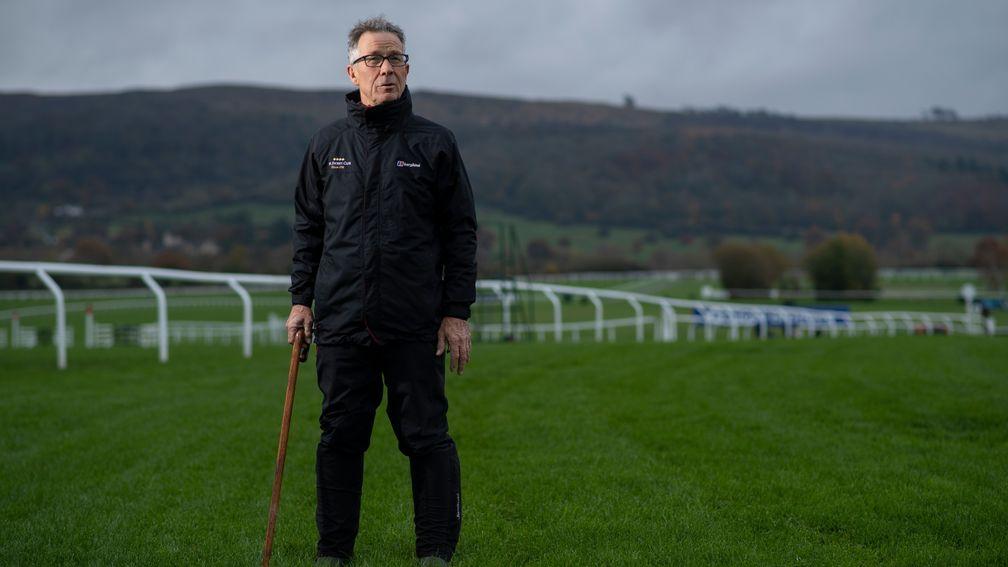
On Sunday, Cheltenham clerk of the course Simon Claisse oversees his last meeting at the track, having worked in the role for over 20 years. In 2019, Stuart Riley spent a day with Claisse to find out more about the challenges of the role.
This piece was originally published on November 23, 2019
It takes a lot to beat a 4.15am alarm out of bed. But with day one of the November meeting already lost, three months of rain like he has not seen in 20 years of working at Cheltenham and over two feet of standing water in places the last time he saw the course, Simon Claisse did so comfortably last Saturday.
He confesses he barely slept and was already checking in with the on-course weather station on his phone when 4am came around. Anything in the region of five to eight millimetres and he knew the meeting was in trouble.
Two and a half millimetres is not only exactly what he wanted to see but also the sort of information that meant he could finally get some sleep, if it were not for the fact he then had to start one of the busiest working days in racing.
It is easy from afar to think all a clerk of the course does is walk the course and tell the groundstaff how much water to put on, but Claisse would not need to arrive before 5.30am and leave more than 12 and a half hours later if that were the case.
“Today’s not a run-of-the-mill day. Parts of the course were under two feet of water so we’ve had to think on our feet, but even then the racing surface is 15-20 per cent of the job of a clerk – there are so many responsibilities,” says Claisse, whose first action is to meet head groundsman Ben Hastie and see how the hallowed turf handled the night.
The pair know the course well enough that near-total darkness is no barrier to getting a sense of where they stand, and as soon as Claisse’s trusty stick first breaches the surface, the tension dissipates.
Hastie, who lives on site, slept just fine and Claisse, who rests his head 12 miles away unless things are really dicey – when he sleeps in the hospital on site – can finally relax too. He knows the meeting will survive.
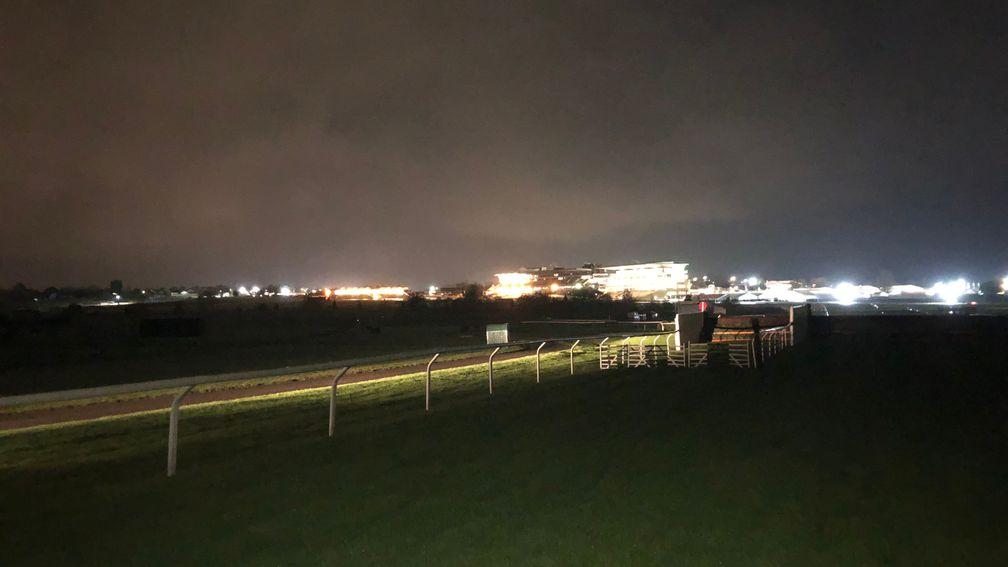
“We thought October was going to be our wet weather event of the season, but this has been unlike anything I’ve ever seen, especially at this time of year,” he explains. “In July 2007, we had 107mm of rain in less than 24 hours and flash-flooding across Gloucestershire, but that’s the only time I’ve seen the course like it was on Thursday and Friday – we had nearly 60mm in the final week before the meeting and 252mm in the last seven weeks.”
Hastie drives as the two inspect various parts of the track and the downhill section bypassing the third-last on the chase course is given total scrutiny, with a lengthy debate of all the various issues. Is there enough room? How badly will the ground cut up with all races using it? Should the hurdle be dolled off for the chases? Should they lead them slightly with rails? Do they need the arrows? How will the home bend fare? The pair concede daylight would be a help and any changes are postponed until they have walked the course in its entirety with such a provision.
Once back in the office it is time to get the message out. He updates the racing world via Weatherbys, speaks to the regional BBC radio broadcast, films an update for Cheltenham’s social media feeds that may or may not have required several takes.
All of that takes place before the 7am senior management meeting, during which he floats the ideas of runners to go straight to post, dropping the parade before the big race, not allowing racegoers on to the infield and keeping photographers off the grass, all to protect the surface and to encourage as few cars as possible with the carparks on grass some of the worst affected areas on site.
Claisse skips the post-meeting bacon roll and after a quick detour to the office to pick up his raceday file, it is off to check in with fellow clerks – Warwick’s Jane Hedley and Exeter’s Daniel Cooper – both of whom are on hand to shadow, learn from and help the master at a meeting the course treats like the festival to give as many people as possible some experience of the protocol come the most important four days of the year.
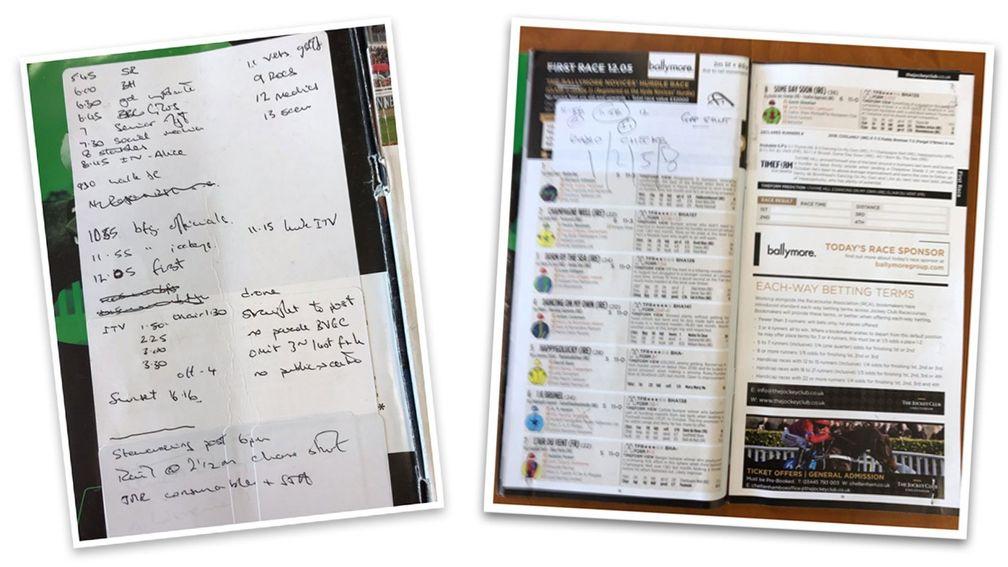
Claisse then gives the weighing room a final once-over before any jockeys arrive, although he always turns the sauna on upon arrival as once it did not work and Claisse’s entire approach is to eliminate mistakes. He can forgive himself if something goes wrong, but it will not be allowed to happen twice.
The pre-parade ring, trainers' hut, anti-doping and stabling facilities all get checked personally. On his travels Claisse picks up any stray litter he sees and passes an empty bucket that might just be required for a horse in several hours' time – so he fills it. That is the level of attention to detail.
“Most of what we do is planning so we can sort things out at short notice,” says Claisse, who has two files of plans, contingencies, back-ups and emergency procedures on his desk, and with that it is back to the weighing room where he and Hedley, who will act as clerk for the day under Claisse’s watch, prepare their racecards so everything they need is to hand.
The pages are stapled and labels added, with everything – from the timing of calling the jockeys to arrive at the start, to where the rails need to be before each race and any movements – duly noted so they can be checked off. With the ITV cameras in place and the last race scheduled for 16 minutes before sunset – and no race allowed to start within ten minutes of the sun going down – they know they are on a tight schedule, while all the timings for the feature have to be tweaked given they have had the all clear to skip the parade.
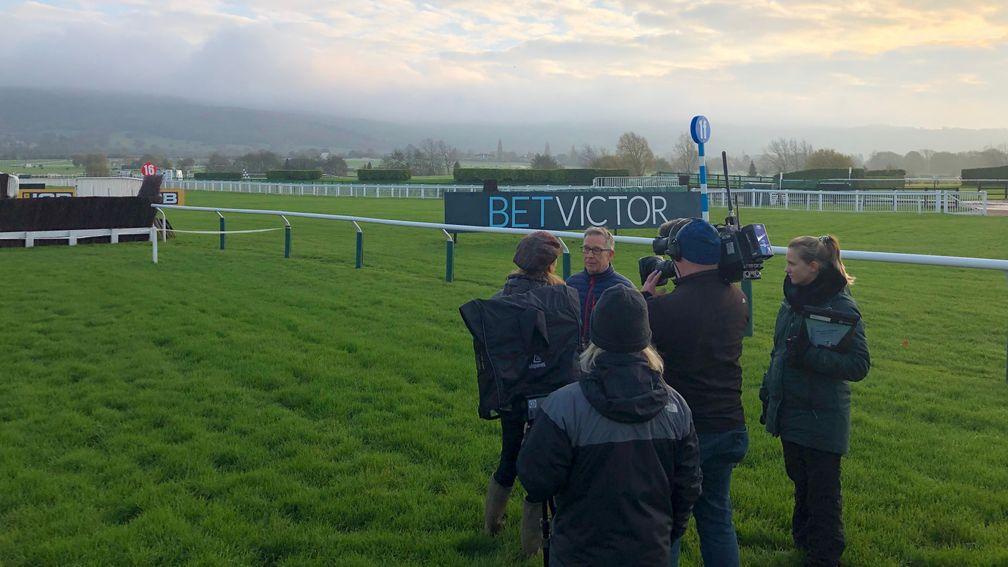
Next on the list is a recording for The Opening Show with Alice Plunkett, but not before Ruby Walsh has a go at winding Claisse up. “I spoke to AP [McCoy] yesterday [the abandoned Friday] and said ‘we’d be racing today if you and I were still riding,’ and he said ‘too right we would, we’ve ridden in way worse!'”
Claisse laughs it off, but rather than wonder if he got the call wrong, he sees it as a vote of confidence from two all-time greats that they are right to be going ahead on the day.
Media obligations out of the way, he pops in on the owners and trainers to ensure those that provide the entertainment will be well taken care of, grabs a banana – which is all he eats until getting home that evening – and then it is time for perhaps the most famous of clerking jobs, the course walk.
Claisse is joined by Hedley, Cooper, assistant head groundsman Alastair King, BHA’s senior inspector of courses Richard Linley and chairman of the stewards' panel Anthony Webber. Claisse is the only one without a stick – a fact that sticks out as the turf-poking begins instantly.
It appears to be an unwritten rule of the collective course walk that two sticks must be in the ground at any given time as they spread far and wide in an examination of the track. “There’s plenty of sticks and experts here already,” quips Claisse about being the odd man out, before pointing out that unlike the others, he has already made his own assessment.
To walk the famous course with Claisse is eye-opening; it is something he estimates he has done more than 3,000 times and there is so much that goes into managing the racing surface through the winter to peak for the spring. You probably did not know the soil at the top of the hill is different, and drains better, than the rest of the track, or that they have changed to a more robust grass over the years. Perhaps most surprisingly, the outer four foot of fences are false and sit on the line the hurdlers will take during the festival.
“It allows us to save the inside line on the chase track and, while they’re perfectly safe to jump and stitched into the fence, it is unlikely anyone is going to be out there, so we can save the ground,” explains Claisse, who has to crane and forklift the extensions in and out of position when the ground can handle the load.
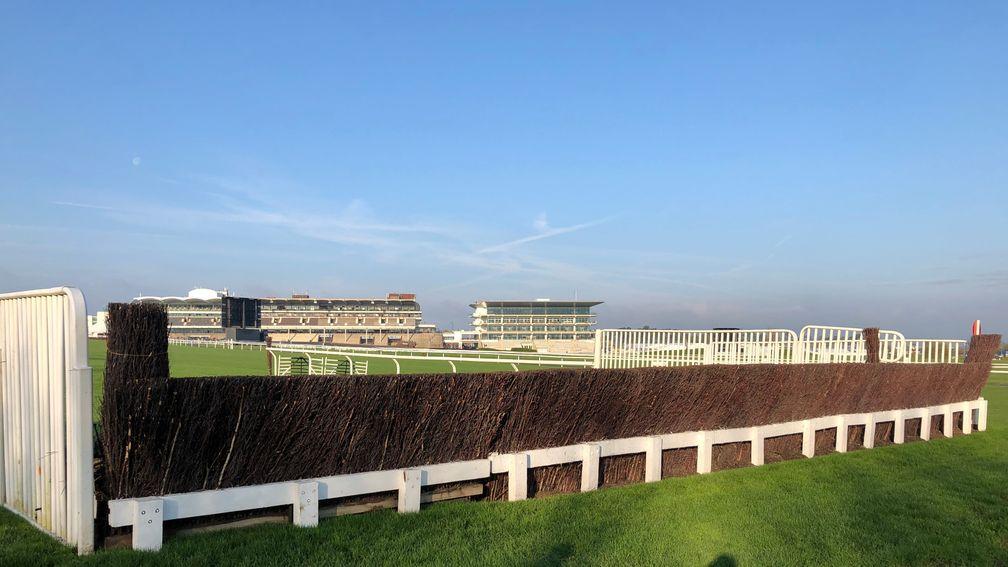
With vastly more racing surface in terms of square footage than any other course in Europe, it is complex to manage and that size is offset by the fact that five intersecting courses means space is still the limiting factor. That brings us to the question of the bypassed third-last fence and whether or not there is room to squeeze the 17 runners for the BetVictor between the rail and the second-last hurdle at the bottom of the hill.
In daylight everyone is happy “there’s loads of room”, something backed up by the fact champion jockey Richard Johnson has come out to examine the home bend – one glance from there was all he needed to decide it did not even require a closer look – but Claisse and co decide to use the arrows pointing them around the hurdle anyway; 'just in case' is something of a mantra.
As Claisse loops up the straight, track thoroughly inspected, he recalls his first raceday in the job at the October meeting in 2000. “It was a disastrous start,” admits a still-embarrassed Claisse. “There was a mix-up in communication with the groundstaff and they didn’t put the tape across for the finish of the second race. Mick Fitzgerald’s horse was leaning in on Carl Llewellyn’s and he thought it wouldn’t matter as he’d eventually get to the tape – except it wasn’t there and he got put out on another circuit. Carl and Nigel were absolutely fuming; it was very embarrassing on my first day.”
Given his meticulousness, it will come as no surprise the potential nickname ‘Calamity Claisse’ was subsequently starved of oxygen.
With the course walked, Hedley briefs the stewards and Claisse talks the jockeys through the changes to both course and pre-race procedures. Then it is up to the fourth floor of the main stand, where he, Hedley, and two spotters – one for the veterinary and one for the medical teams – watch the action.
While 33,500 sets of binoculars are trained on the field circling at the start, Claisse’s are completing the circuit that lays ahead of them, making sure the rails are where they should be, his team is in place and there is nothing untoward.
Six and a half hours after Claisse arrived, the action gets under way. He is instantly devastated as the riders go for the outside rail on the hurdles track, not because of what it says about the state of the ground but because that is exactly where he has told his step son Elliot to go in his pony race on Sunday.
For all his seriousness, he is still human. Yet no sooner has he lamented Elliot’s chances being sabotaged than he is back following the action, not of the race but his team, always looking ahead and behind the field to make sure what needs to be done gets done – an eye in the sky only a radio message away. He watches the racing itself when he gets home.
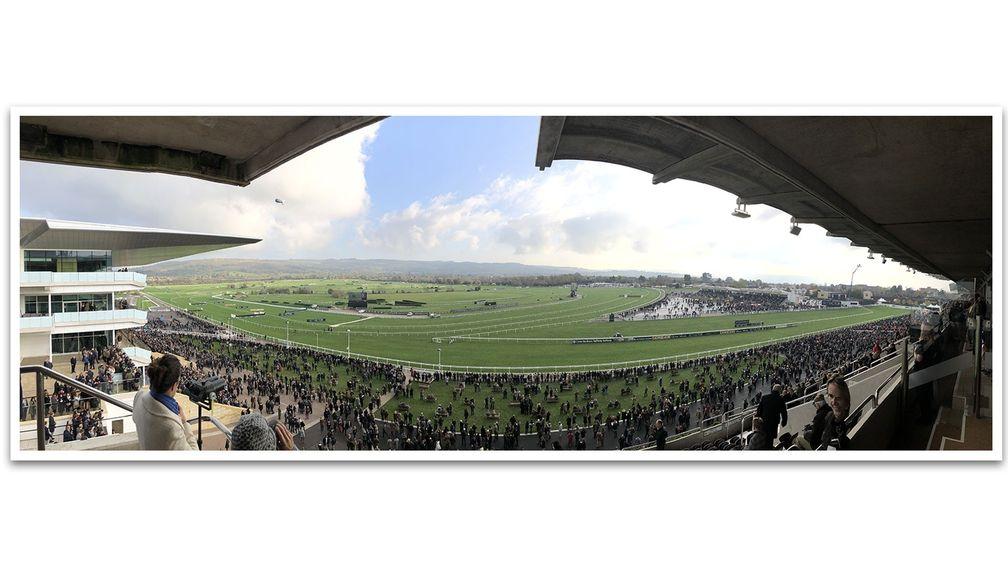
When the riders return after the Grade 2 won by Thyme Hill, the third- and fourth-placed jockeys David Bass and Gavin Sheehan tell Claisse he has the description about right at soft, heavy in places, but Paddy Brennan is not happy. He feels it is heavy all over and mentions his mount slipped slightly a few strides before the second-last.
Alarm bells ringing, Hastie and Linley are summoned and the trio are in such a rush to inspect the troublesome area before the next race, also over hurdles, that it is decided Claisse does not have time to switch into his wellies. On the dash to inspect the track, taken at a light jog, Claisse is asked for a selfie and despite being in a mad rush, he still obliges.
Linley has already watched a replay, so knows the rough line Brennan was on, and they spread out like children on a scavenger hunt to try to find any evidence. After five minutes of looking they cannot find any hint of a slip and head back content to let them jump the hurdle in the following race – but Claisse is keen they talk to Brennan to assuage any concerns.
The next big moment is race three, with the switch from the hurdles to the chase track, with all three run back to back to be done by 2.30pm and avoid any issues with low sun. The change of course requires a number of changes to crossings and rails, while the tape where Fitzgerald put Llewellyn off the course 20 years ago has since been replaced by a rail after two horses ran out through the tape at the October meeting last year.
It is another example of Claisse’s insistence on improving anything that isn't perfect and not letting mistakes repeat. A nine-strong team now move the rail so quickly they have it in its run-in position before the field jumps the first in the back straight.
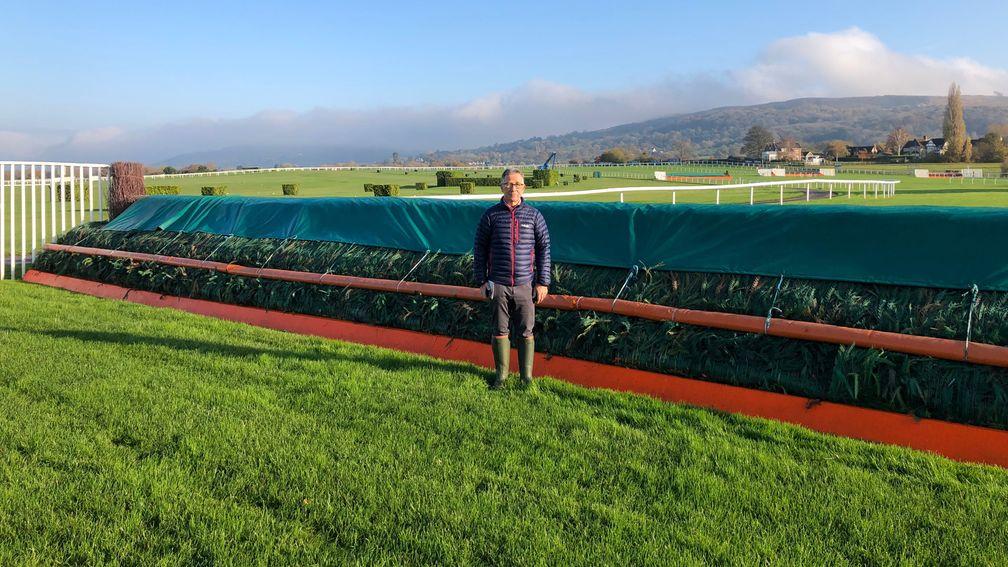
As he walks back to the winner’s enclosure, the 59-year-old points to the See You Then bar and terrace. “That’s the community I think I’ll join when I finally hang up my stick, it’s the perfect spot,” he says before admitting he is in no rush to join them just yet. “It’s an immensely satisfying job, I couldn’t want for a better environment and I can’t emphasise enough the importance of the team around you, everyone here is excellent at what they do and that makes my job easier.”
But for all the changes to the layout and infrastructure, it is public attitudes that Claisse feels has changed most in his time in the role. “I guess the biggest change is the focus is different these days with social media, we’re much more aware of the welfare issue and the language we use,” he says.
When the 11 remaining runners in the BetVictor pass through the gap around the second-last hurdle with ease you could be forgiven for thinking Claisse may breathe a sigh of relief, the last major obstacle overcome. Yet he replies: “You can never let your guard down or concentration slip, we’re not there yet. There’s a few more races and another day to get through, chaos can strike at any time.”
To emphasise the point Claisse recalls another incident. “During the April hunter chase meeting in 2007 I had a clerk learning the ropes. I got a phone call from Kim Bailey mid-race saying ‘have you seen what your boy’s done?’. They’d moved the tapes after the field had gone by but it was a four-mile race so they had another circuit to go. I tried to get through on the radio but had no luck so I panicked and decided to run for it, down four flights of stairs, I was hurtling across the lawn trying to get to them and I nearly flattened a poor child, so her dad came chasing after me and I could see the horses coming around the bend.
"I knew I wasn’t going to get there in time and I was worried he might, but I hurdled the gate to stay out of his reach and it was only at that point I could see the message had got through and they’d moved the tapes back and they all went out for another circuit. I was so relieved and very apologetic to the father.”
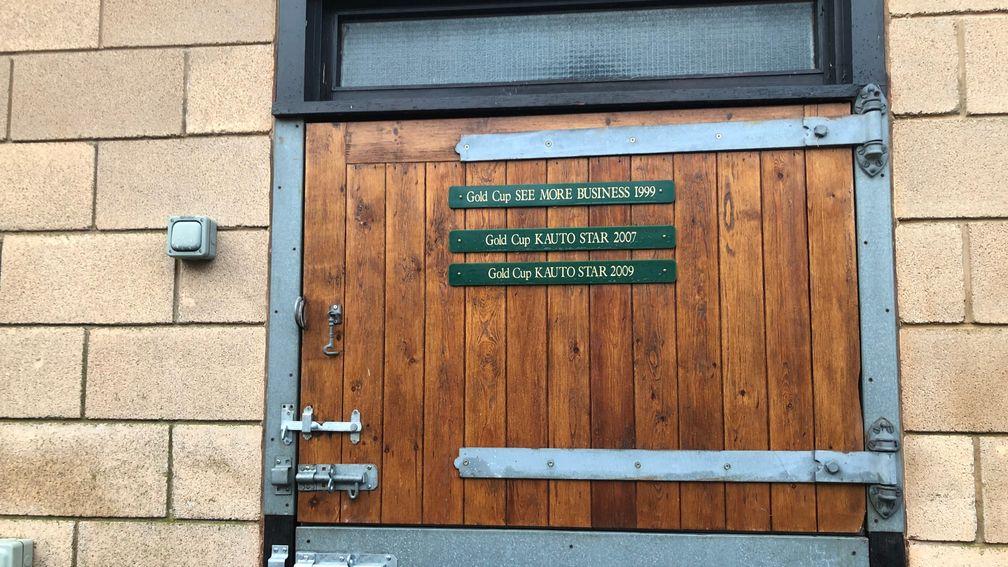
The three remaining races pass without incident this time and then it is time for debriefs with his team, the BHA, where Claisse worked in a regulatory role before replacing Philip Arkwright some 20 years ago, the doctors, vets, the stables and management team. Claisse explains: “We’ll concern ourselves only with things that need fixing for tomorrow, everything else can be dealt with next week.”
When Claisse was 18 he volunteered to help the groundstaff at the festival but was unsuccessful. These days his drive for improvement has been instrumental in making those four days in March – and the racecourse in general – such a success.

Win the ultimate Cheltenham Festival experience in the Racing Post Christmas Countdown. You and three friends could travel to the festival in style with helicopter transfers from your hotel. Simply place a bet on the Racing Post app this Friday to be entered into the prize draw, plus there are weekly prizes to be won. Find out the full details here.
Published on inFeatures
Last updated
- Top racing books of 2024: must-reads of the year, from the perfect Christmas stocking filler to a pioneering jockey
- Captain Marvel: how a modern master of Cheltenham and a genuine pioneer executed one of the shocks of the year
- 'We’re delighted with how it's going' - joint-trainers prepare for exciting year after Flat string is doubled
- 'We’ve had to work hard this sales season' - Kennet Valley seeking to build on success with biggest string
- Alastair Down's archives: the great writer recalls Coneygree's glorious victory in the 2015 Cheltenham Gold Cup
- Top racing books of 2024: must-reads of the year, from the perfect Christmas stocking filler to a pioneering jockey
- Captain Marvel: how a modern master of Cheltenham and a genuine pioneer executed one of the shocks of the year
- 'We’re delighted with how it's going' - joint-trainers prepare for exciting year after Flat string is doubled
- 'We’ve had to work hard this sales season' - Kennet Valley seeking to build on success with biggest string
- Alastair Down's archives: the great writer recalls Coneygree's glorious victory in the 2015 Cheltenham Gold Cup